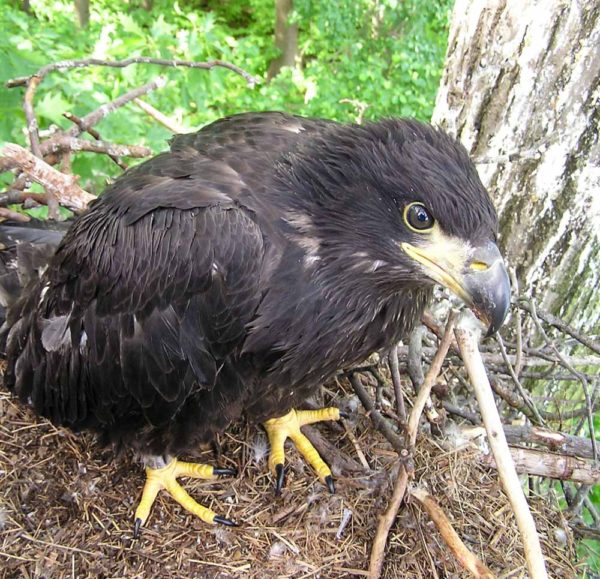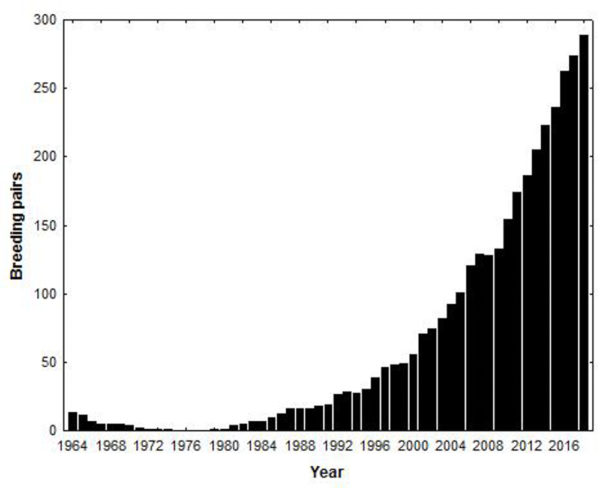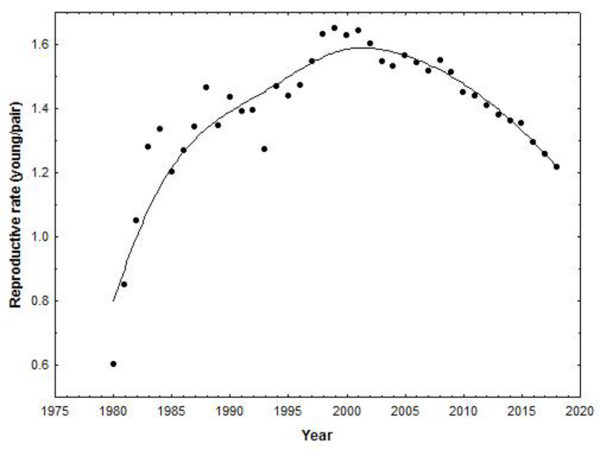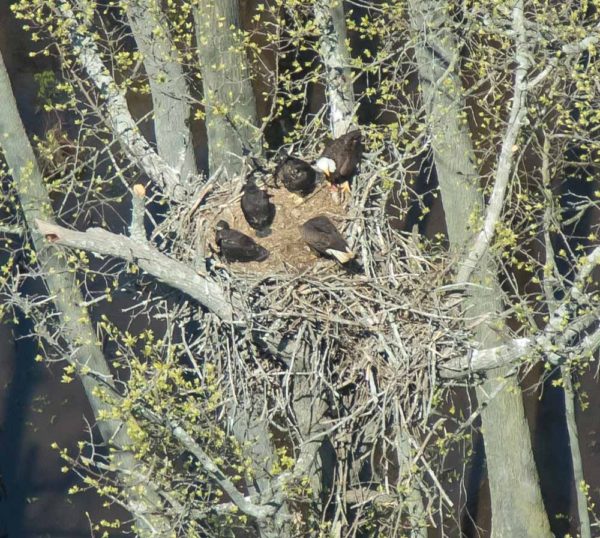Eagle productivity continues slide
Hello world!
May 25, 2018
The fish factory
July 16, 2018By Bryan Watts | bdwatt@wm.edu | (757) 221-2247
July 16, 2018
The 2018 breeding season along the James River continued a trend that has been documented for the past 15 years. The breeding population continues to increase while productivity continues to decline. The 2018 survey documented a modern record population of 289 breeding pairs along the James River compared to 274 in 2017 and 262 in 2016. However, the number of young produced per territory sank to 1.09, a value not seen on the survey since 1982. The two opposing trends appear to continue the population’s path to stability.

Single-young broods are increasingly common along the James River and are likely to become the dominant brood size in the near future. Photo by Bryan Watts.

The breeding population of bald eagles along the James River has increased from 0 breeding pairs in the mid-1970s to 289 breeding pairs during the 2018 breeding season. Data from CCB.

Reproductive rates for eagles along the James River peaked in the late 1990s and have consistently declined since that time. Data from CCB.
The shift in productivity can be seen in the details of breeding performance. During the 2000 breeding season, only 15% of pairs that laid eggs failed to produce young compared to 34% in 2018. Brood size has also become smaller over time. In 2000, 2-young broods represented 56% of all broods. In 2018, 2-young broods had fallen to 48% of all broods and 1-young broods had risen from 29% to 42%. If this trend continues, 1-young broods will become the most common brood size. Three-young broods have declined from 15% to 10% and have become increasingly uncommon.

A pair of adult eagles feed three young on Curles Neck Swamp along the James River. Three-young broods are becoming less common over time as brood size shifts to smaller broods. Photo by Bryan Watts.



